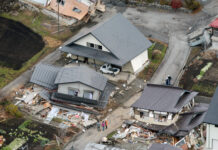NEW DELHI: In the backdrop of the Cold War and perceived threat of strikes from space, both United States and the erstwhile USSR worked on the Anti-Satellite Weapons (ASAT) programme, but it was the former which tested it first in 1959.
India shot down one of its satellites in space on Wednesday with an anti-satellite missile to demonstrate this complex capability making it only the fourth country after the US, the USSR and China, to have used such a weapon.
However, there was a gap of nearly 60 years between the first country–the US– that tested the ASATs and India, which is the last one in the club to demonstrate the capability.
In September 1959, a High Virgo missile was launched by the US from B-58 aircraft targeting an Explorer satellite. However, it was unsuccessful, according to a paper presented by Anatoly Zak at the United Nations Institute for Disarmament Research.
A month later, a Bold Orion missile launched from a B-47 aircraft at 11-kilometer altitude passes within four kilometers from the Explorer-6 satellite at an altitude of 251 kilometres.
Russia too was developing its ASAT. The 1,400-kilogram Russian Co-Orbital ASAT weapon was designed to approach a satellite, then detonate an explosive that would damage the target with shrapnel, states a paper by the ‘Union of Concerned Scientists’.
After conducting a series of seven tests from 1963 1971 including five interceptor detonations the Soviet Union declared the system operational in 1973, it added.
“ASATs emerged almost as soon as the first satellites were placed into orbit. Both the United States and the Soviet Union started developing nuclear-tipped interceptors as early as the 1950s in order to counter a perceived threat of strikes from space,” Daniel Porras, Space Security Fellow, UNIDIR, Geneva, said in a document which comprises the suggestions for ASAT guidelines.
China was a late entrant in this domain. In 2007, China destroyed its FengYun 1C weather satellite with an SC-19 missile, leaving behind space debris consisting of 3,280 pieces of trackable debris, as well as up to 32,000 pieces that are non-trackable.
The following year, during Operation Burnt Frost, the US destroyed its own satellite, USA-193, with an SM-3 interceptor creating 174 pieces of trackable debris, plus non-trackable shards.
Some experts believe that Israel too posses the ASAT capability to down a hostile satellite. PTI







